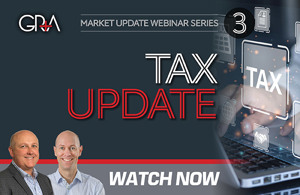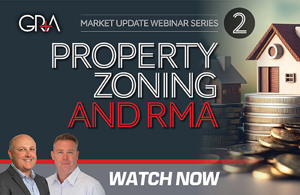
In our last newsletter I talked about the new zero rating rules that apply to land transactions between two GST registered parties. In this edition I'm going to look at the new apportionment rules that were brought in at the same time and apply from 1 April 2011 with certain exceptions.
First a bit of background.
"Old" Rules
Historically the GST rules that apply to claiming GST on purchase have applied on a principal use test. If the principal purpose in acquiring the asset was to apply it towards a taxable activity, a GST claim on the full purchase price was permitted. For example, if a car was being acquired with the intention of it being used 51% of the time for business purposes, then full GST could be claimed. The sting in the tail of the old regime then came in as the car was applied towards non business purposes, as there were then relatively complicated adjustment rules that required GST output adjustments (i.e. payments to be made) each GST return period.
The same rules applied in respect of property, whereby if a property was bought with the principal purpose of trading, a full GST claim was available. If the property was then rented residentially (which is an exempt use for GST purposes), adjustments were made each GST return period based on the rules set out in a judgment known as the Lundy case.
New Apportionment Approach
The new approach applying from 1 April 2011 allows for proportionate claims of GST. Intuitively this does seem sensible. If a car, for example, is going to be used 75% for business purposes and 25% for private purposes it makes sense that 75% of the GST be claimed at the outset rather than applying the old principal use test. Where the complication in the new rules comes into play is that you then need to monitor the use of the car over time. If it transpires that it is only used 50% for business purposes then an adjustment will need to be made to repay some of the GST claimed so that the net amount claimed equates to 50% of the GST paid originally so that it reconciles to the 50% business use.
Bob & His Car
To illustrate by way of example, let's take Bob who is a plumber and buys a vehicle that he expects will be 75% used for business purposes. He pays $23,000 including GST. The GST component of this is $3,000. Initially Bob claims a refund of $2,250 being 75% of the GST paid reflecting the intended 75% business use. The car was bought in June 2011.
Bob now needs to monitor the actual use of the car over time and potentially make an adjustment in what is known as his first adjustment period. The first adjustment period is either the end of the financial year in which the car is acquired or at the end of the next financial year. For example, Bob could choose his first adjustment period to be either the period that ends 31 March 2012 or 31 March 2013. Whatever adjustment period he chooses, as at that date he will need to calculate the actual business use for the adjustment period and compare it to the intended use. If the actual business use at the end of the first adjustment period turned out to be 50% rather than 75% then Bob would have $750 GST to pay which then effectively means his net GST claimed is $1,500 (being the $2,250 originally claimed less the $750 adjustment paid back), which in turn equates to 50% of the original GST paid.
Application to Land
Many readers will be interested to know how these rules apply to property bought for dealing and development purposes where 100% of the GST has been claimed initially but the property is then rented residentially because an appropriate buyer cannot be found. The first point to note is that these new rules only apply to property acquired on or after 1 April 2011. If you own property at present in a GST registered trading entity and you are renting that residentially, you make adjustments according to the old rules if acquired pre 1 April 2011. In other words, if you have historically been making GST adjustments according to the formula set out in the Lundy case then you continue to do so.
If you have acquired the property on or after 1 April 2011 and after claiming GST have not been successful in finding a buyer, you apply these new rules. The starting point to apply the new rules is to determine what your first adjustment period is going to be. Assuming a 31 March balance date, this will either be the period that ends 31 March 2012 or 31 March 2013. In short, if you have acquired a trading property on or after 1 April 2011 and end up renting it residentially, you do not make periodic adjustments each GST return but rather will assess the actual use of the property as at 31 March 2012 or 31 March 2013. If at that time the property has not sold, you will look back and determine during the period of ownership how long it was rented for and how long it was applied towards the intended activity of property dealing (in other words how long was it on the market for). Without going into detail, if the property has been rented and not marketed for sale, its business use in terms of a percentage will be very low, meaning at the first adjustment period a potentially significant amount of GST will need to be repaid.
To illustrate by way of example, let us say that a property is bought in June 2011 for $460,000 with a $60,000 GST claim being made in the period covering the purchase. The client decides that their first adjustment period will be the period that ends 31 March 2012. At that point the property has been owned for nine months. Outside of the first two months of ownership where the property was renovated and then marketed for sale, the property has been rented. Without going into the detail of the calculation, applying the formula shows that the property has only been 20% applied towards the taxable activity and 80% applied towards the exempt activity of residential rental. The result of this is that there will be GST to pay of $48,000 for the adjustment period (being 80% of the GST claimed).
For those who are familiar with the far smaller but regular adjustments that are made in applying the Lundy calculation, you will immediately recognise that the adjustments under the new rules are going to be far more significant if a property is rented residentially for a significant period of time.
Conclusion
In summary, new apportionment rules mean that GST is not always claimed in full when an asset is acquired. Rather you will need to ascertain what the business use percentage is and then claim that relevant percentage. You will then need to monitor the actual use of the asset over time and decide on what period of time you are going to choose to be your first adjustment period. At the end of the first adjustment period you will compare the actual use to the intended use and there may be GST to pay (or to claim) as a result. In relation to property, this GST adjustment could be very significant if the property is rented residentially. Those with property acquired prior to 1 April 2011 can ignore these rules and continue to apply the existing rule.
As always please contact the team at GRA with any queries in relation to GST apportionment on 09 522 7955 or click here.

Matthew Gilligan
Managing Director and Property Services Partner
Did you like this article? Subscribe to our newsletter to receive tips, updates and useful information to help you protect your assets and grow your net worth. We're expert accountants providing expert advice to clients in NZ and around the world.
Disclaimer: This article is intended to provide only a summary of the issues associated with the topics covered. It does not purport to be comprehensive nor to provide specific advice. No person should act in reliance on any statement contained within this article without first obtaining specific professional advice. If you require any further information or advice on any matter covered within this article, please contact the author.
Comments
Testimonials
The volume of detailed information we were given was awesome. More options than I ever imagined. I enjoyed every session - Colleen E - December 2017
Gilligan Rowe and Associates is a chartered accounting firm specialising in property, asset planning, legal structures, taxation and compliance.
We help new, small and medium property investors become long-term successful investors through our education programmes and property portfolio planning advice. With our deep knowledge and experience, we have assisted hundreds of clients build wealth through property investment.
Learn More








































